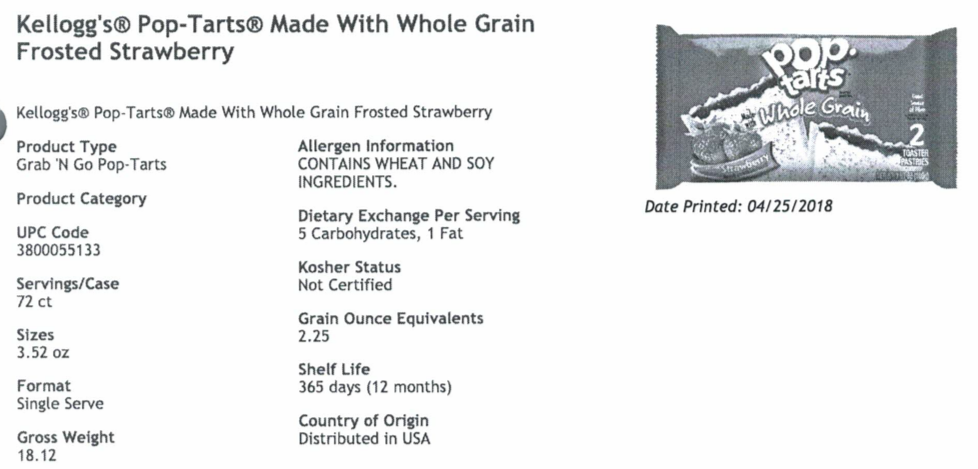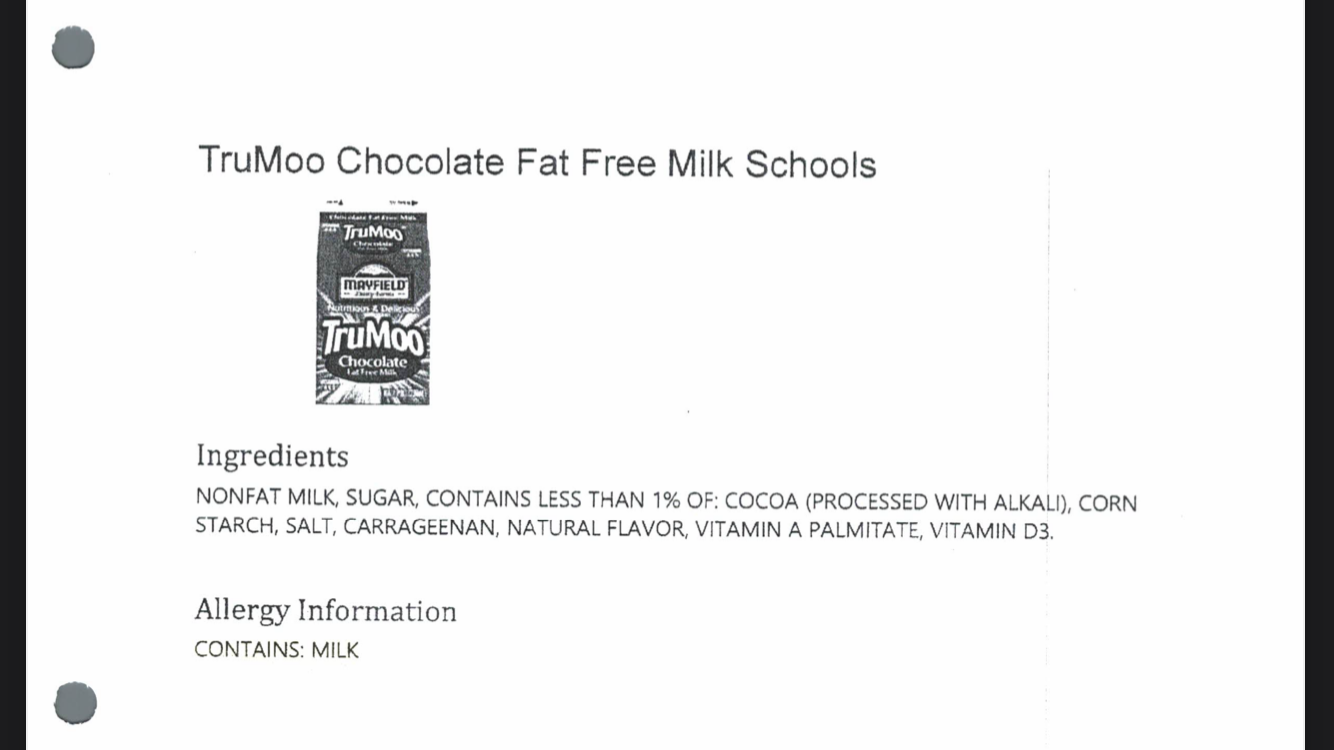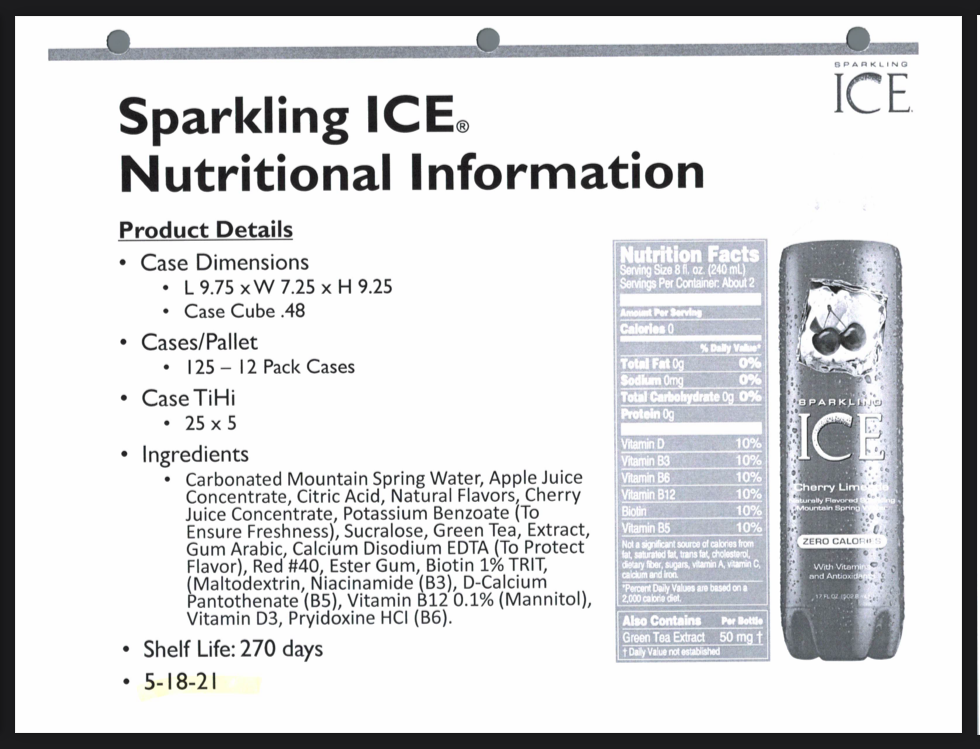Food from the school cafeteria holds a nostalgic and positive place in many students’ hearts, even if some may like to joke around about its presentation or appeal. But as knowledge and information regarding dietary health evolve and refine, many common ingredients in school meals might be called into question for potentially harmful qualities or side effects. Let’s analyze the ingredients of some popular food items.
Frosted Strawberry Pop-Tart
Ingredients (sourced from Forsyth County Schools’ Food & Nutrition Services’ Ingredient Files): WHOLE WHEAT FLOUR, SUGAR, CORN SYRUP, ENRICHED FLOUR (WHEAT FLOUR, NIACIN, REDUCED IRON. VITAMIN BI [THIAMIN MONONITRATE), VITAMIN B (RIBOFLAVIN), FOLIC ACID) DEXTROSE, SOYBEAN AND PALM OIL (WITH TBHQ FOR FRESHNESS), BLEACHED WHEAT FLOUR, POLYDEXTROSE, GLYCERIN, FRUCTOSE. CONTAINS TWO PERCENT OR LESS OF WHEAT STARCH, DRIED STRAWBERRIES. DRIED PEARS, DRIED APPLES, CALCIUM CARBONATE, SALT, LEAVENING (SODIUM ACID PYROPHOSPHATE, BAKING SCRA), SODIUM STEAROYL, LACTYLATE, CITRIC ACID, MODIFIED WHEAT STARCH, DATEM, GELATIN, YELLOW CORN FLOUR, PALM OIL, CARAMEL COLOR, XANTHAN GUM, CORNSTARCH, TURMERIC EXTRACT COLOR, STRAWBERRY JUICE CONCENTRATE. NATURAL AND ARTIFICIAL FLAVORS, SOY LECITHIN. VITAMIN A PALMITATE, RED 40, NIACINAMIDE, REDUCED IRON, YELLOW 6. VITAMIN Be (PYRIDOXINE HYDROCHLORIDE), VITAMIN Be (RIBOFLAVIN), VITAMIN BI (THIAMIN HYBROCHI DRIDE), SIUE 1, COLOR ADDED.

The Frosted Strawberry Pop-Tart, a lunchtime classic, is a common choice for many in elementary and middle school. The culinary addition of Seed Oils (Soybean And Palm) has recently become highly controversial for groundbreaking yet under-studied claims that vegetable/seed oils can promote heart disease and inflammation (as an effect of their high concentration of polyunsaturated fats, specifically linoleic acid). Soy Lecithin, used as an emulsifier, may be a hormonal concern for boys and men regarding its strongly estrogenic nature, along with potential chronic intestinal inflammation (studied in mice). Citric Acid, commonly derived by the fermentation of Aspergillus niger (a toxin-producing mold), may be contributing to the inflammation seen in asthma, juvenile idiopathic arthritis, autistic spectrum disorder, and fibromyalgia. Overall, I would recommend to abstain from consuming this food item. Instead, I advise one to reach for whole fruits or lower-processed snacks offered by the cafeteria.
TruMoo Chocolate Fat-Free Milk
Ingredients: NONFAT MILK, SUGAR, CONTAINS LESS THAN 1% OF: COCOA (PROCESSED WITH ALKALI), CORN STARCH, SALT, CARRAGEENAN, NATURAL FLAVOR, VITAMIN A PALMITATE, VITAMIN D3.

A drink every kid in American K-12 education has likely drunk at least once, TruMoo Chocolate Milk stands as an iconic carton. The usage of Corn Starch as a thickening agent may worry some over its potential abilities to increase blood sugar levels and harm the cardiovascular system. Carrageenan, used as a thickening agent and preservative, may trigger inflammation, bloating and/or cause irritable bowel syndrome (IBS) and colon cancer. Pasteurized Milk, heated to a specific temperature in order to kill any harmful bacteria, may harbor a lesser nutritional content (fats, proteins, enzymes, vitamins, minerals) in comparison to the increasingly popular alternative of raw milk. Although much of this data may seem striking, perhaps outrageous to some, it is important to note the nuance of data and the scientific process employed in such studies. Dietary health is a developing field; many professionally-studied claims may be overrepresented in select sample populations and require further testing. All in all, the TruMoo Chocolate Milk is not that bad of a drink option, though it may be better to pick the DairyPure 1% low-fat milk carton to forgo any emulsifiers, thickeners and/or preservatives.
Sparkling ICE® Cherry Limeade
Ingredients: Carbonated Mountain Spring Water, Apple Juice Juice Concentrate, Potassium Benzoate (To Ensure Freshness), Sucralose, Green Tea, Extract, Gum Arabic, Calcium Disodium EDTA (To Protect Flavor), Red #40, Ester Gum, Biotin 1% TRIT, (Maltodextrin, Niacinamide (B3), D-Calcium Pantothenate (B5), Vitamin B12 0.1% (Mannitol), Vitamin D3, Pryidoxine HCI (B6).”

The Sparkling ICE® brand, eternally available for purchase from the cafeteria or the vending machines, received a class action lawsuit in 2018 for (allegedly) illegally containing an unlisted artificial flavor (d-malic acid) found in gasoline. The addition of Sucralose, an artificial sweetener, may worry some for its potential to affect insulin sensitivity and gastro-intenstinal tract problems. Calcium Disodium EDTA, another preservative, may disrupt the intestinal barrier and increase intestinal permeability. Red #40, a controversial color additive popularized for being derived from petroleum, has been shown in studies to induce behavioral hyperactivity and reduce attention span, yet is approved for use in food and drinks by the U.S. Food and Drug Administration. For context, all of these ingredients are utilized to enhance product consistency in its signature texture, taste and color. Instead of any Sparkling ICE® flavor, I would recommend for students to pick out the 100% fruit juice cartons provided or simply just plain water.
With all of this to consider, it is important to remember that Lambert and Forsyth County Schools Food and Nutrition advisors and staff would never want to feed students any deeply harmful ingredients or food products; they follow statewide nutrition standards from The Georgia Board of Education and national school nutrition limitations from the US Department of Agriculture (as a part of the Healthy, Hunger-Free Kids Act). The health of our peers is treated with utmost importance, and the field of research in dietary information is continuously developing for the better. This article is recommending the healthier options in the cafeteria.
















